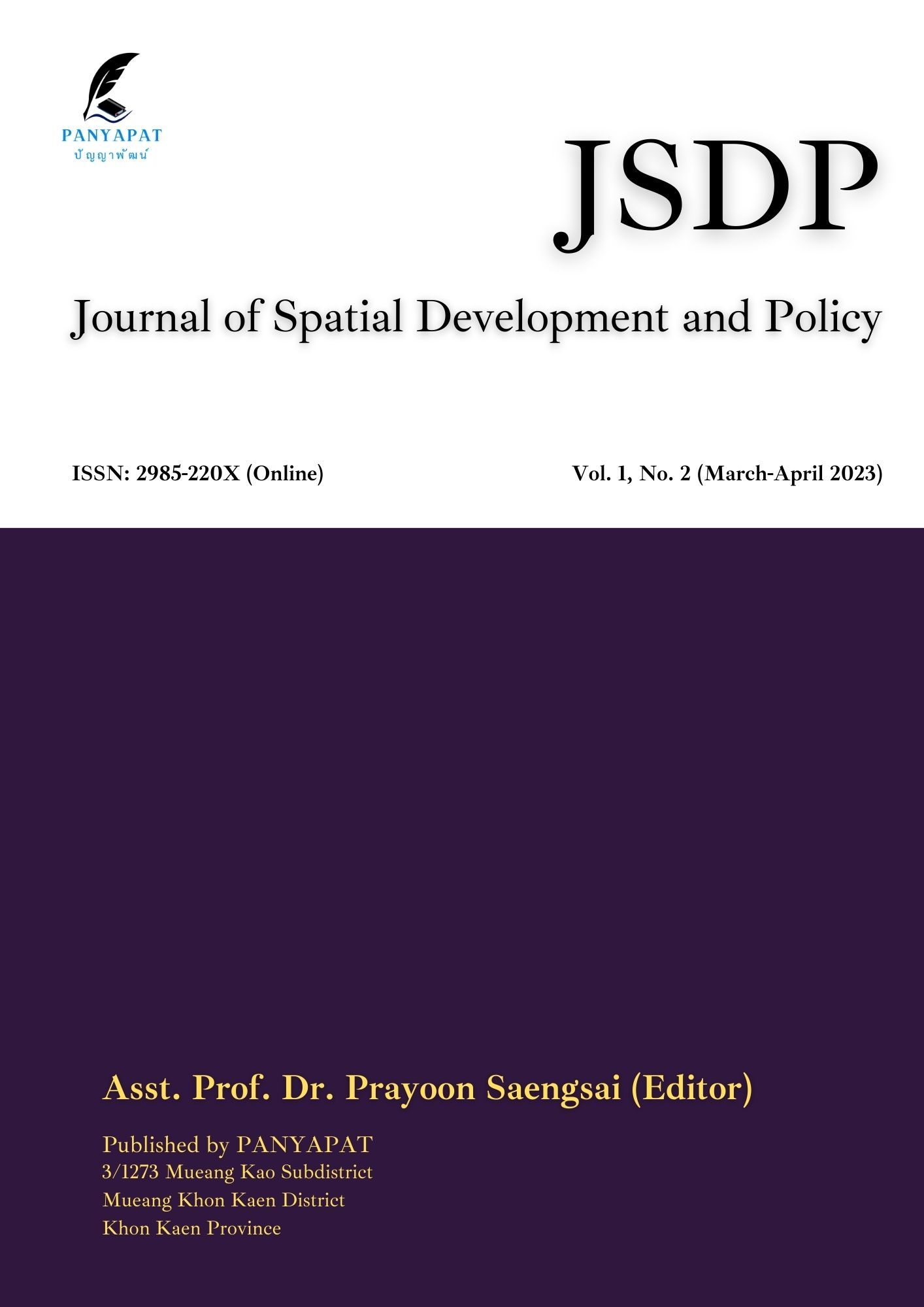Buddhist Medicine: The Path of Healing through Buddhism and Modern Medicine
Main Article Content
Abstract
The purpose of this article is to present “Buddhist Medicine: The Path of Healing through Buddhism and Modern Medicine”. Buddhism emphasizes physical and mental health for a happy life, with its principles applied in promoting health through therapy. Modern medicine has advanced in treating physical illnesses, yet it falls short in addressing all mental suffering. Buddhist medical principles, including mindfulness, meditation, wisdom, empathy, forgiveness, and compassion, are integrated into treating both physical and mental ailments. Mindfulness raises self-awareness, meditation cultivates inner peace, wisdom aids in understanding the root of suffering, and empathy fosters understanding of others. Forgiveness helps release emotional pain, while compassion encourages love and goodwill towards oneself and others. Buddhist medical practices offer a sustainable approach, yielding balanced health, reduced stress, and tranquility. They contribute to physical robustness, mental calmness, social adaptability, and spiritual strength, resulting in a truly fulfilling life. Buddhist medical philosophy proves effective in addressing persistent physical and mental suffering, providing an alternative for those seeking happiness and improved quality of life.
Article Details

This work is licensed under a Creative Commons Attribution-NonCommercial-NoDerivatives 4.0 International License.
References
กรมการแพทย์แผนไทยและการแพทย์ทางเลือก. (2565). ประวัติกรมการแพทย์แผนไทยและการแพทย์ทางเลือก. สืบค้น 29 มกราคม 2566. จาก https://www.dtam.moph.go.th/index.php?option=com_content&view=article&id=26:history&catid=15&Itemid=320&lang=en.
ฉวีวรรณ สุวรรณาภา. (2559). พระพุทธศาสนากับวัฒนธรรมไทย. สืบค้น 29 มกราคม 2566. จาก https://www.mcu.ac.th/article/detail/405#:~:text=,ส่วนพระสงฆ์ซึ่งเป็นตัวแทนวัดก็กลายเป็นผู้%20นำทางด้านจิตใจของประชาชน%20เป็นศูนย์รวมแห่งความเคารพ%20เชื่อถือ%20ศรัทธาและความร่วมมือ.
ทรงทรรศน์ จินาพงศ์ และ อารีกุล อมรศรีวัฒนกุล. (2562). กิจกรรมทางกายและสุขภาพจิตในเด็กและเยาวชนไทย. สืบค้น 29 มกราคม 2566. จาก http://www.cypas.org/uploads/news/y39XzYhLF20191219152620.pdf.
พราวพิมล กิตติวงศ์วิชัย. (2566). ผลของการทำสมาธิบำบัดต่อความวิตกกังวลและความผาสุกทางจิตวิญญาณของผู้ป่วยมะเร็งระยะสุดท้าย. วารสารโรงพยาบาลมหาสารคาม, 20(1), 5-17.
พินิจ รัตนกุล. (2550). วิจัยพบ สวดมนต์ สมาธิ วิปัสสนา รักษาโรคได้ (ตอนที่ 1). สืบค้น 29 มกราคม 2566. จาก https://mgronline.com/dhamma/detail/9500000116913.
แพทย์พงษ์ วรพงศ์พิเชษฐ. (2542). โยคะเพื่อพัฒนาร่างกายและจิตใจ. กรุงเทพฯ: เอช.ที.พี.เพรส.
ภวรรณตรี พลเยี่ยม, สุพัฒนา ศักดิษฐานนท์ และ พูลสุข ศิริพูล. (2565). ผลของการสวดมนต์และทำสมาธิต่อคุณภาพชีวิตและการควบคุมอารมณ์ในผู้ป่วยวัยรุ่นโรคมะเร็ง. วารสารพยาบาลศาสตร์และสุขภาพ, 45(4), 59-72.
มหาวิทยาลัยมหาจุฬาลงกรณราชวิทยาลัย. (2539). พระไตรปิฎกฉบับภาษาไทย ฉบับมหาจุฬาลงกรณราชวิทยาลัย. กรุงเทพฯ: โรงพิมพ์มหาจุฬาลงกรณราชวิทยาลัย.
เมธาวี แสงสมส่วน, ฑิฆัมพร หอสิริ และ สุชีรา ภัทรายุตวรรตน์. (2561). ผลของการจัดกิจกรรมโยคะต่อสุขภาวะทางจิตและคุณภาพชีวิตในวัยรุ่นตอนต้น. ใน การประชุมวิชาการนำเสนอผลงานวิจัยระดับบัณฑิตศึกษาแห่งชาติ ครั้งที่ 47. (น. 754-764). มหาสารคาม: มหาวิทยาลัยราชภัฏมหาสารคาม.
สุพัตรา ศรีวณิชชากร. (2564). ความเชื่อมโยงกาย-จิต: ประเด็นที่ตระหนักดี แต่การนําใช้ปฏิบัติยังท้าทาย (บทบรรณาธิการ). วารสารระบบบริการปฐมภูมิและเวชศาสตร์ครอบครัว, 4(3), 3-5.
อมรรัตน์ จันทรัตน์, จุรีรัตน์ บัวแก้ว. (2558). กระบวนการฟื้นฟูจิตใจผู้ป่วยมะเร็งด้วยสมาธิของทิพยสถานธรรม. วารสารศิลปศาสตร์ มหาวิทยาลัยสงขลานครินทร์ วิทยาเขตหาดใหญ่, 7(1), 75-85.
อุไรวรรณ พลจร (2558). ผลการสวดมนต์แบบพุทธต่อความวิตกกังวลของผู้ป่วยมะเร็งโลหิตวิทยาที่ได้รับการรักษาด้วยเคมีบำบัด. (พยาบาลศาสตรมหาบัณฑิต, มหาวิทยาลัยสงขลานครินทร์).
Adams, V. (2011). Integrating Abstraction: Modernising Medicine at Lhasa’s Mentsikhang. In Proceedings of the Tenth Seminar of the IATS, 2003. Volume 10: Soundings in Tibetan Medicine. (pp.29–43). Netherlands: Brill's Tibetan Studies Library.
Adler, N.E., & Stewart, J. (2010). Health Disparities across the Lifespan: Meaning, Methods, and Mechanisms. Annals of the New York Academy of Sciences, 1186, 5-23.
Barry, J. (2006). The effect of socio-economic status on academic achievement. (Bachelor of Arts, Wichita State University.
Ellison, C. E. (1991). Religious involvement and subjective well-being. Journal of Health Social Behaviors, 32(2), 190-209.
Fischer, D. J., Villines, D., Kim, Y. O., Epstein, J. B., & Wilkie, D. J. (2010). Anxiety, depression, and pain: differences by primary cancer. Supportive care in cancer, 18(7), 801–810.
Fredrickson, B.L. (2001). The role of positive emotions in positive psychology: The broaden-and-build theory of positive emotions. American Psychologist, 56(3), 218-226.
Gilbert, P. (2009). The Compassionate Mind: A New Approach to Life Challenges. London: Constable and Robinson Ltd.
Goyal, M., Singh, S., Sibinga, E.M.S., Gould, N.F., Rowland-Seymour, A., Sharma, R., Berger, Z., Sleicher, D., Maron, D.D., Shihab, H.M., Ranasinghe, P.D., Linn, S., Saha, S., Bass, E.B., Haythornthwaite, J.A. (2014). Meditation programs for psychological stress and well-being: a systematic review and meta-analysis. JAMA Internal Medicine, 174(3), 357-368.
Hofmann, S.G., Sawyer, A.T., Witt, A.A., & Oh, D. (2010). The effect of mindfulness-based therapy on anxiety and depression: A meta-analytic review. Journal of consulting and clinical psychology, 78(2), 169–183.
Keown, D. (2005). Buddhism and bioethics. London: Palgrave Macmillan.
King, D. E., & Bushwick, B. (1994). Beliefs and attitudes of hospital inpatients about faith healing and prayer. The Journal of family practice, 39(4), 349–352.
Ledesma, D., & Kumano, H. (2009). Mindfulness-based stress reduction for chronic pain: A systematic review and meta-analysis. Journal of Pain, 10(6), 610-622.
Mayer, E.A. (2011). Gut feelings: the emerging biology of gut–brain communication. Nature Reviews Neuroscience, 12(8), 453-466.
Mehta, R., Sharma, K., Potters, L., Wernicke, A. G., & Parashar, B. (2019). Evidence for the Role of Mindfulness in Cancer: Benefits and Techniques. Cureus, 11(5), e4629.
Michello, J. (1988). Spiritual and emotional determinants of health. Journal of health, 39(6), 630-637.
Rusch, H. L., Rosario, M., Levison, L. M., Olivera, A., Livingston, W. S., Wu, T., & Gill, J. M. (2019). The effect of mindfulness meditation on sleep quality: a systematic review and meta-analysis of randomized controlled trials. Annals of the New York Academy of Sciences, 1445(1), 5–16.
Salguero, P. (2022). Buddhist medicine: Overview of concepts, practices, texts, and translations. In Lo, V., & Stanley-Baker, M. (Eds.). Routledge handbook of Chinese medicine. (pp. 417–426). Abingdon, United Kingdom: Taylor & Francis.
Sears, S. R., & Kraus, S. (2009). Mindfulness and acceptance in chronic pain. In S. H. Smith & L. C. Hayes (Eds.), Acceptance and mindfulness in behavioral healthcare: Applications across diagnoses and populations (pp. 247-272). New York: Springer.
Seligman, M. E. P. (2002). Authentic happiness: Using the new positive psychology to realize your potential for lasting fulfillment. New York: Free Press.
Singleton, M. (2021). The Ancient & Modern Roots of Yoga. Retrieved 26 January 2023. from https://www.yogajournal.com/yoga-101/philosophy/yoga-s-greater-truth/.
Turakitwanakan, W., Mekseeplarard, C., & Busarakumtragul, P. (2013). Mindfulness meditation reduces cortisol levels in healthy adults: A randomized controlled trial. Journal of Alternative and Complementary Medicine, 19(1), 49-56.
